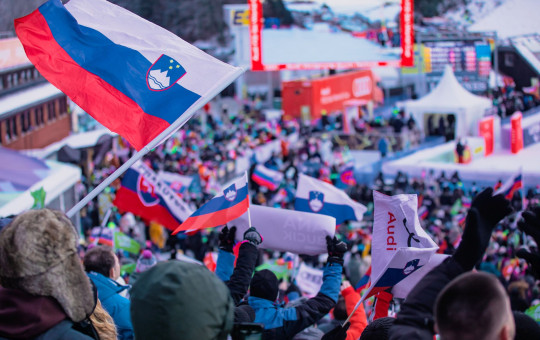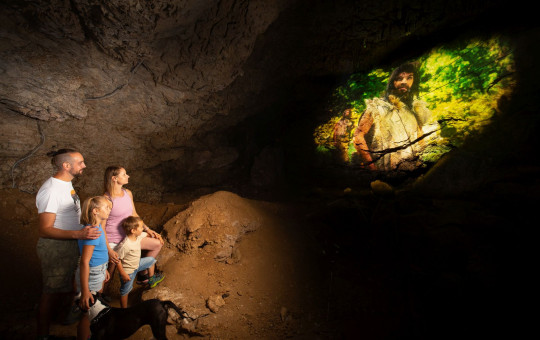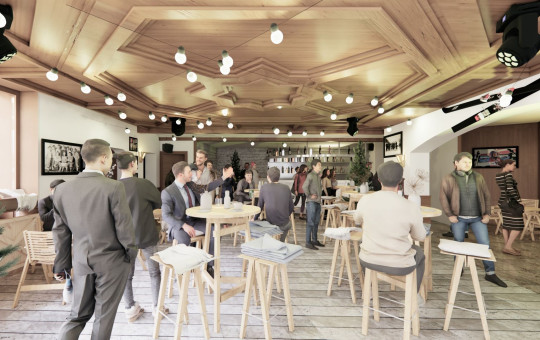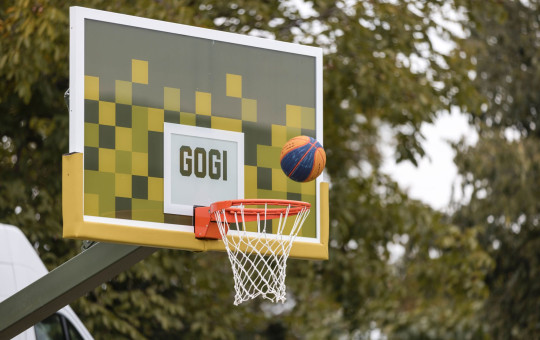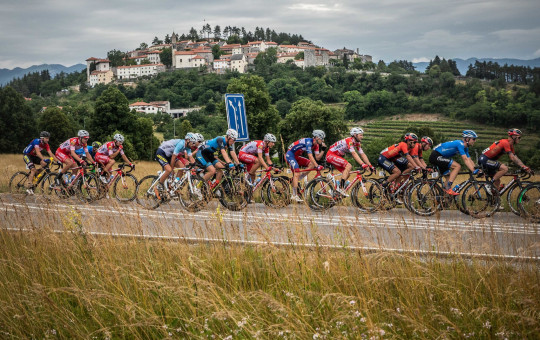Date: 27. February 2023
Time to read: 2 min
Franci Petek is Director of the Planica National Sports Institute and a former world champion in ski jumping, a title he won in Predazzo in 1991. For several years, he was also the director of the Ski Association of Slovenia. He has a PhD in geography and is a trained Montessori preschool teacher. In the interview, he speaks about the features of the Planica Nordic Centre and shares his thoughts about the Gorišek brothers’ ski flying hill, one of the major crowd pullers in the valley under the Ponce mountains.
You were one of the six members of the Organising Committee of the Planica Nordic Centre, representing the Ski Association of Slovenia. Could you describe the State’s role in the renovation of Planica facilities that made the centre what it is today?
The role of the State was central in that it included the construction of the modern Planica Nordic Centre in the list of five national projects applying for EU funding. If the State had not recognised the incredible importance, heritage and symbolic relevance of Planica, this ambitious infrastructure and investment project could not have been carried out in such a sensitive environment.
The Planica Nordic Centre is an architectural masterpiece; the ski jumps are laid out in a fan-like shape, extending downward into the valley from a single point at the top of the hill in the form of a scree slope. Could you explain what made the organising committee understand the incredible importance of finding the right and high-quality architectural solutions for Planica?
What it came down to was the need for incredibly soft layouts of otherwise rough-looking facilities in the natural surroundings of a glacial valley. Today’s face of Planica gives one the feeling that all facilities, such as the ski jumps, have been there forever, that they were created by nature itself.
-
 The Committee for the construction of the NC Planica: Mojca Plestenjak (M. of Education, Science and Sport), Jelko Gros (Sport Institute of the RS Planica), Daniel Oblak (SIRS Planica), Franci Petek (Ski Association of Slovenia), Primož Finžgar and Peter Petriček (SAS). Photo: NC Planica
The Committee for the construction of the NC Planica: Mojca Plestenjak (M. of Education, Science and Sport), Jelko Gros (Sport Institute of the RS Planica), Daniel Oblak (SIRS Planica), Franci Petek (Ski Association of Slovenia), Primož Finžgar and Peter Petriček (SAS). Photo: NC Planica
-
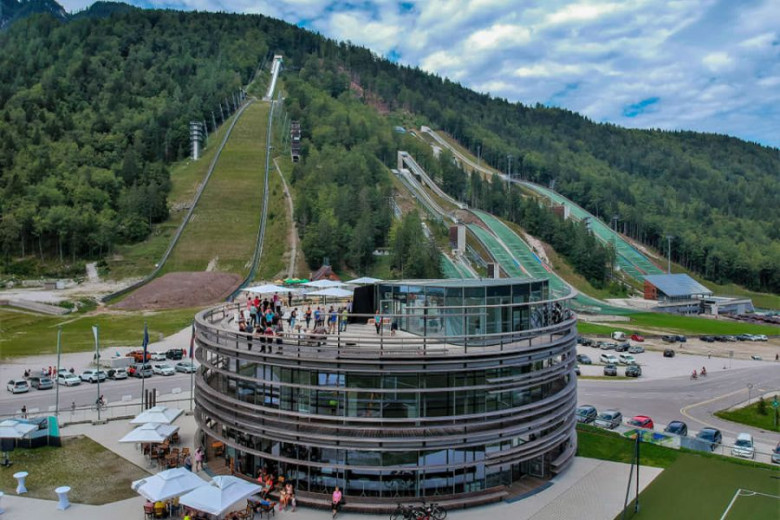 Central Building for Cross-Country Skiing (the OOST) visible in the surface above the ground. Photo: NC Planica
Central Building for Cross-Country Skiing (the OOST) visible in the surface above the ground. Photo: NC Planica
-
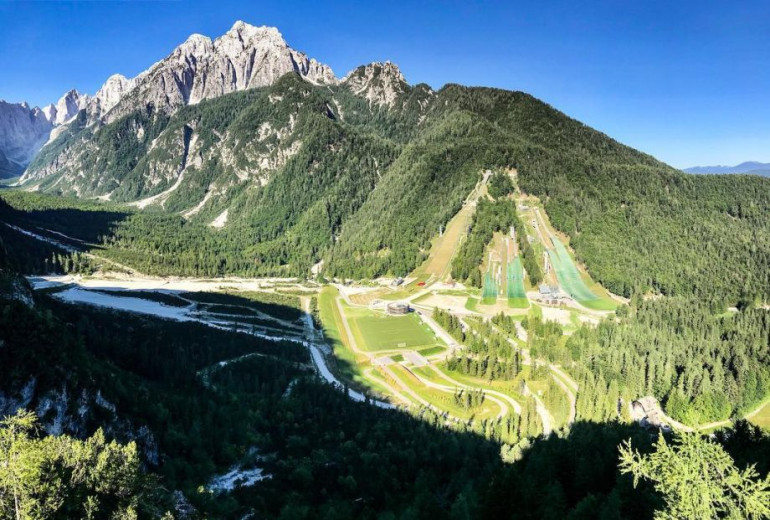 A fan-shaped set of jumps arranged from a common point at the top of the hill. Photo: NC Planica
A fan-shaped set of jumps arranged from a common point at the top of the hill. Photo: NC Planica
-
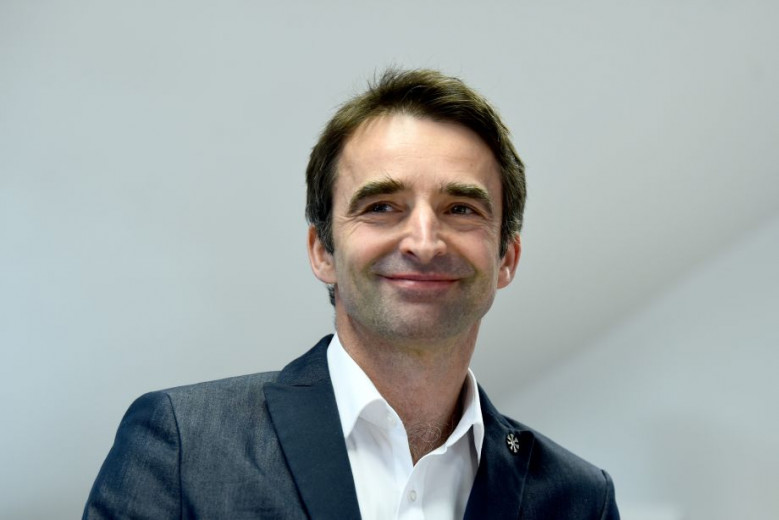 Franci Petek, Sport Institute RS Planica, Director. Photo: STA, Tamino Petelinšek
Franci Petek, Sport Institute RS Planica, Director. Photo: STA, Tamino Petelinšek
Could you tell us, very broadly, what the 8,500-net-square-metre Central Building for Cross-Country Skiing (the OOST) consists of and what is visible above ground and what lies below the surface?
The Central Building for Cross-Country Skiing (note: this is the official name of the building) is also the main information and activity point for visitors. It is the only building that was not there in the valley under the Ponce mountains before the construction of the Planica Nordic Centre in 2015. The three underground levels house more than 7,000 m2 of multi-purpose facilities. They can be used as a parking garage in wintertime and turned into skiers’ changing rooms or ski equipment service facilities during skiing competitions. And from April to November, they transform into a three-level indoor cross-country skiing track.
The valley under the Ponce mountains can probably take credit for the biggest shift in thinking that a person could fly on skis, making the Gorišek brothers’ ski flying hill, a venue that still holds the highest number of world records, the most recognisable asset of Planica around the world. Do you see any possibilities for upgrading the Planica ski flying hill to regain a competitive edge over Vikersund in Norway, where all recent world records have been set?
The fact that the first ski flights over 100 and 200 metres were achieved in Planica has an important background. It happened because of Slovenia’s knowledge, courage, boldness, heart and resilience. Slovenians are trailblazers, world leaders in this field! Of course ski flying will continue to develop. The current International Ski Federation rules for the construction of ski jumps and ski flying hills do not allow the expansion of the Gorišek brothers’ ski flying hill. But its last renovation was carried out with a potential future expansion in mind that would require relatively small interventions. We therefore need to wait until the time is ripe for the FIS to adopt new rules that will allow the upgrading of ski flying hills to enable flights over 250 metres.
What role did Stanko Bloudek and later the Gorišek brothers play during the construction of the ski jumps and the ski flying hill in Planica compared to other similar facilities in ski jumping venues, such as Obersdorf in Germany, Kulm in Austria and Vikersund in Norway?
I mentioned earlier that Slovenian knowledge drives the global development of ski jumping. This has been the case since the times of Bloudek’s generation. Our ski jumps and ski flying hills have always been a sort of model to be copied. Most of today’s ski flying hills have profile lines identical or very similar to the one in Planica designed by the Gorišek brothers. Vikersund is the only venue whose construction managed to achieve the essential characteristics that make their ski flying hill competitive with the one in Planica. The geographical location of their ski flying hill also works in their favour – it lies at an altitude almost at sea level, where the air is thicker, offering a small advantage in terms of flying conditions.

